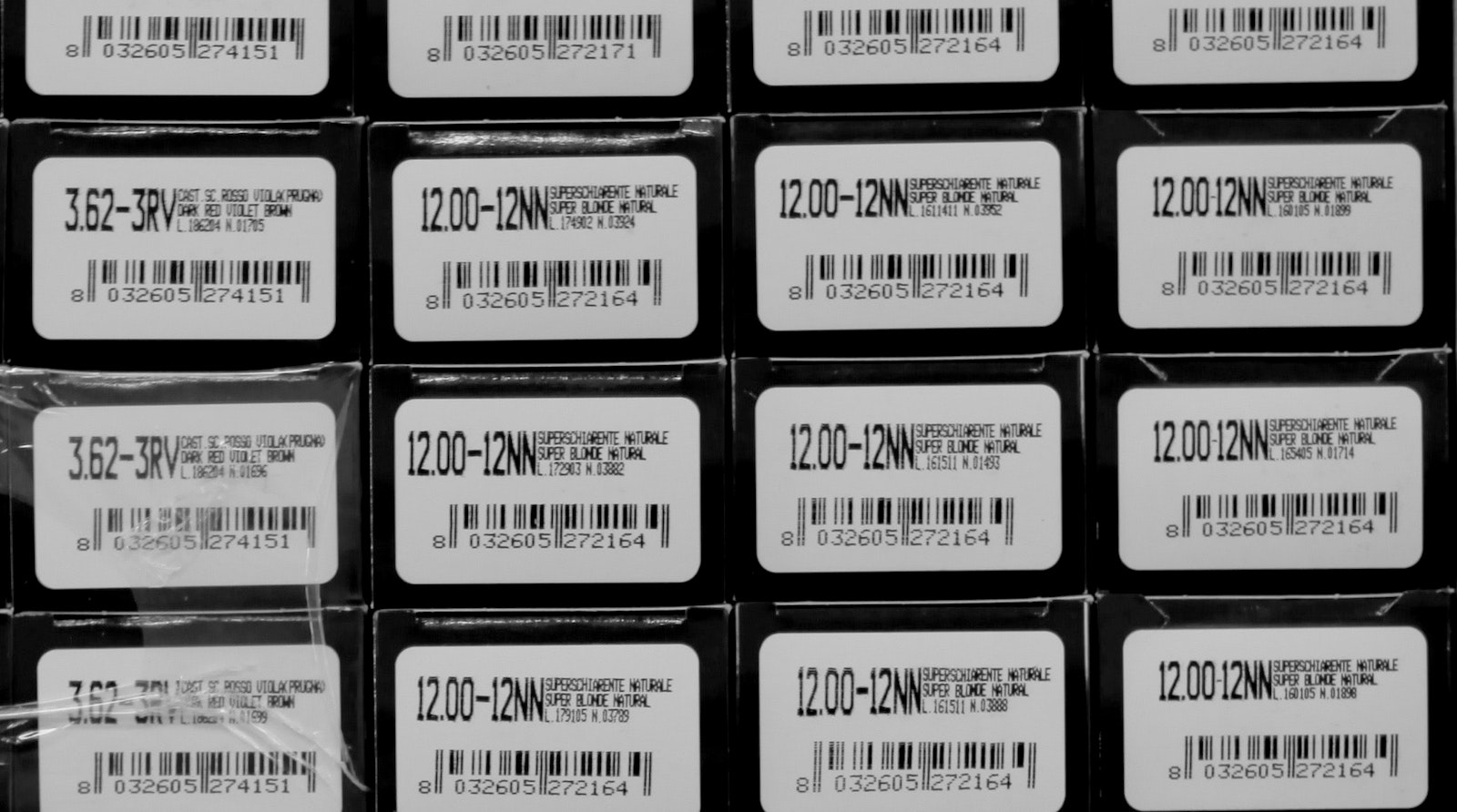Table of Contents
** Minutes
What is a stock keeping unit (SKU)?
What is a universal product code (UPC)?
SKU vs. UPC vs. Barcodes: Breaking down the differences
Which do you need — SKUs or UPCs?
Best practices for SKU & UPC barcodes
Stop worrying about SKUs and UPCs when you partner with ShipBob
If you’ve spent any time reading ecommerce blog posts, it’s likely that you’re familiar with the industry’s two most confusing acronyms: SKU and UPC.
Both have 3 letters. Both are product identification methods. Both can use barcodes.
But for all their similarities, these two concepts are not interchangeable. To keep inventory management as simple and efficient as possible, it is crucial that business owners understand precisely how SKUs and UPCs differ from each other, as well as when and how to use each of them.
In this article, we will discuss what SKU and UPC are, highlight the key differences, explain a few best practices when it comes to choosing the right method, and how a 3PL like ShipBob can help you find the best inventory process and actually run it for you across multiple fulfilment centres.
What is a stock keeping unit (SKU)?
A SKU (the common abbreviation for “stock keeping unit”) is a custom alphanumeric code that a merchant creates and assigns to each of their products.
Every product (including product varieties) should have its own unique SKU, so that the seller can easily distinguish products from each other. This makes inventory management and inventory tracking much more efficient.
Every company will have its own system of rules for creating and managing SKUs. Typically, though, SKUs are made up of 8-10 letters and numbers that are representative of the product’s unique features (such as colour, size, model number, product number, etc.).
For example, say that a t-shirt company wants to create a SKU for a green V-neck t-shirt, size 6, from the collection released in November of 2009.
The company uses the following convention to create their SKUs:
[Shirt Style]-[Colour]-[Size]-[Collection Month]-[Collection Year]
Under this rule, the SKU for this item would be V-GRE-06-11-09.
What is a universal product code (UPC)?
A UPC, or Universal Product Code, is a universally unique 12-digit numerical code and corresponding barcode assigned to a product that remains constant, regardless of who is selling the product, where it is sold, or how it is sold.
The first 6 to 9 digits of a UPC are the company prefix, which identifies the business that owns the intellectual property rights to the product in question. The next 2 to 5 digits are selected by the UPC owner. The final digit number is the sum of all the previous digits, which ensures that no two UPCs are the same.
Because UPCs are universally used and recognised, they are regulated by an international non-profit organisation called the GS1. The company that designed the product in question must purchase UPCs from GS1.
What is a barcode?
In a technical sense, barcodes are machine readable images consisting of a series of parallel black and white lines of varying lengths and widths.
In commerce, barcodes are used for product identification. SKUs use barcodes sometimes, whereas UPCs Essentially, a barcode serves as a visual representation of SKU’s or UPC’s numeric code.
SKU vs. UPC vs. Barcodes: Breaking down the differences
SKUs and UPCs are often used interchangeably for each other because they both serve as product identification numbers. However, SKUs and UPCs are not the same thing. Here is a breakdown of the major differences between the two.
Alphanumeric vs. numeric codes
SKUs are alphanumeric codes, meaning that they include both letters and numbers, and can technically be any length. UPCs can only include numbers, and are limited to 12 digits.
Who creates them
Every company creates its own SKUs, according to rules and logic that make sense to the people managing the inventory in that company.
UPCs are created by GS1 according to its established rules. To obtain a UPC for one of its products, a company must apply for and purchase a licensed UPC from GS1.
Permanence
Because a business creates its own SKUs, SKUs are easily changeable. While overhauling the naming convention for all of your SKUs may be complicated (depending on how many you have), as long as your convention remains consistent, it is easy to add, remove, or modify SKUs in your catalogueueue.
UPCs, however, are not changeable. Once created and assigned to a product, a UPC is permanent and cannot be easily modified. It can also very difficult to add UPCs, depending on which company prefix capacity plan you initially signed up for (more on that later).
“If I create a SKU in my ecommerce platform, I can link that in ShipBob myself to whatever inventory it is. If I run out of one product, I can assign it to another SKU. With ShipBob, you see exactly what is picked. With ShipBob, that inventory is automatically marked as accounted for, so it’s held until it’s shipped.”
Gerard Ecker, Founder & CEO of Ocean & Co.
Internal vs. external use
SKUs are best used internally for inventory management, tracking, and organisational purposes. Because SKUs and rules for SKU creation are bespoke to a particular merchant, they don’t mean anything to other businesses.
But because UPCs are permanent and universally recognised, they are excellent for external use. UPCs enable you to take ownership of a product in the larger world of commerce, and gives everyone a standardized way to track the same goods as they pass through multiple hands on the way to customers.
Barcodes
Unlike SKUs and UPCs, barcodes are used as identifiers by all kinds of businesses — not just retail companies. Therefore, barcodes are not always the same thing as SKUs and UPCs.
Rather, a barcode is a tool that supplements or “rephrases” a SKU or UPC number, representing it in a visual, scannable format.
SKUs can have barcodes associated with them, but they are not a requirement. Typically, a business will create barcodes for their SKUs if they want to speed up inventory management processes by using a barcode scanner to automatically update information in an inventory management software system.
UPCs, on the other hand, always contain unique barcodes that are just as important as the 12-digit codes. It is almost imperative for companies to print their UPC barcodes on their product labels, since UPC codes by themselves are essentially useless.
This way, a UPC can be scanned anywhere, by anyone, and always identify the same product — and because every company uses the same UPC to identify the same product, every company can keep track of their products as they pass through various vendors to end customers.
SKU | UPC |
Alphanumeric (numbers and letters) | Numeric |
Any length (typically 8-10) | 12 digits |
Created by the business that designed the product | Must be purchased from the GS1 |
Specific to each business | Universally recognisable |
Internal use (shelves and tags) | External use (universal identifier) |
| Physical products and services | Physical products only |
Which do you need — SKUs or UPCs?
Whether your company should use SKUs, UPCs, or both will depend on your business’s present needs and future aspirations.
For smaller businesses with fewer products that are selling DTC, SKUs are usually the most sensible option.
When no other parties are involved in selling your product, it doesn’t make sense to license a universal product code for your items.
Instead, SKUs give you flexibility in terms of inventory management and cost you nothing — and while consumers can use a UPC to look up and buy a product from your competitors, having only a unique identifier for your product will help them find you every time.
However, there are some downsides to only using SKUs. Without claiming a UPC for your products, you run the risk that a different company may swoop in and license the UPC for it before you.
You also need UPCs to sell on popular marketplaces like Amazon, and not having UPCs locks you out of those platforms.
Thus, you should consider investing in UPCs if or when your business begins expanding into B2B, wholesale, retail, or online marketplace channels. Having UPCs in these arenas will help you track your product regardless of where it goes, and helps you compete with other retailers selling the comparable products.
UPCs are also important to establish before you expand internationally, as many countries require products to have regulated product codes in order to be sold in that country.
SKUs are best for… | UPCs are best for… |
B2B channels/Wholesalers/Retail dropshipping & distribution | |
Sole retailers of a product | Selling on online marketplaces |
Supplies (internal use only) | Selling internationally |
| Lots of products | Few products |
“I used to have to pull inventory numbers from three places everyday and move all the disparate data into a spreadsheet. For inventory planning, I love the SKU velocity report, daily average products sold, and knowing how much inventory we have left and how long it will last. The enhanced visibility is great.”
Wes Brown, Head of Operations at Black Claw LLC
Best practices for SKU & UPC barcodes
To make sure that SKUs and UPCs actually serve their purpose — that is, to make inventory management and product identification easier — there are some best practices that you’ll want to follow when creating SKUs or purchasing UPCs.
SKU
Even though SKUs are inherently tailored to every company’s unique needs, there are still some rules of thumb that business should follow when it comes to creating and using them.
- Never use random numbers and letters for SKUs. To give SKUs meaning, you will need to develop and stick to a system or set of rules.
- Before you create your SKU code rules, perform an inventory audit to reassess exactly how many products and product varieties you’ll need SKUs for.
- Identify the specific product details that you want to highlight out in your SKUs (examples include size, colour, purchase date, etc.).
- Consider what products you anticipate adding to your inventory, and whether your SKU creation system would work for them.
- Make sure that all SKUs can be easily read and understood by anyone in your organisation. Each SKU should concisely communicate high-level information about its product at a glance.
- Do not adopt a manufacturer’s SKU as your own. Rather, always assign new items SKUs that you develop according to your business’s unique SKU system.
- Do not reuse SKUs once the item it corresponds to is discontinued. When an item is discontinued, its SKU should be retired.
SKU coding systems can be particularly tricky to design. In order to keep your SKUs simple but effective, here are some common pitfalls to avoid:
- Avoid using characters that can be easily misread and confused by both humans and machines, such as “0” and “O” or “1” and “I”.
- Avoid using special characters, such as “$”, “#”, “%”, and “&”.
- Do not start SKU codes with zeros. Many inventory management systems will automatically eliminate the zero, which can create confusion in SKU tracking.
“We roll out new products and designs on our website 1-3 times a month and send new inventory to ShipBob each week. It’s really easy to create new SKUs and restock existing ones using ShipBob’s technology, which is especially important with high inventory turnover.”
Carl Protsch, Co-Founder of FLEO
UPC
Because UPCs are purchased and assigned rather than developed, the process of obtaining UPCs is a bit more regulated. Here are some best practices to stick to when purchasing UPCs:
- Always purchase your UPCs directly from GS1, since it is the only legitimate supplier of UPC codes. This will help you avoid legal trouble, and protects you from accidentally purchasing a fake, duplicate, or discontinued UPC from a third party.
- If you are a retailer or wholesaler, check if the product you are selling already has a UPC. If it does, you should not attempt to license it again under your company’s prefix.
- Plan ahead when purchasing a GS1 company prefix.
- Once your application for a GS1 company prefix is approved, you can choose a prefix capacity plan to purchase.
- Each plan allots you a particular number of UPCs (anywhere from 10 to 100,000) that all begin with that GS1 company prefix.
- If you end up using all the UPCs on your plan, there is no option to “upgrade” and get additional UPC licenses on that same plan; instead, you must purchase a whole new plan, with your new UPCs having a different GS1 prefix.
- This ultimately creates confusion and headaches — so before you purchase your first GS1 prefix, think ahead and estimate how many UPCs your company might need in the medium to long term, and purchase a plan accordingly.
Stop worrying about SKUs and UPCs when you partner with ShipBob
Whether you are a new venture or a growing ecommerce company, ShipBob can help you manage your inventory efficiently and make sense of both your SKUs and UPCs.
As a tech-enabled 3PL, ShipBob’s inventory management software and analytics lets you name your own SKUs according to your rules. Using whatever SKU architecture you decide, our dashboard tracks the performance of your SKUs over time, providing you with the data and insights you need to optimise your supply chain.
The dashboard also allows you easy edit access —so that you can add and/or subtract SKUs from the system with ease as your business expands — as well as the ability to bundle items under one main SKU.
Overall, ShipBob’s real-time inventory counts and updates help you know exactly how many units of each SKU you have at a glance — enabling you to plan your inventory, reorder accordingly, and better manage your SKUs and UPCs.
“ShipBob’s analytics tool is also really cool. It helps us a lot with planning inventory reorders, seeing when SKUs are going to run out, and we can even set up email notifications so that we’re alerted when a SKU has less than a certain quantity left. There is a lot of value in their technology.”
Oded Harth, CEO & Co-Founder of MDacne
SKU vs UPC vs Barcodes FAQs
Here are answers to the most common questions about SKUs and UPCs.
Is a barcode the same as a UPC?
While a barcode is an indispensable part of a UPC, they are not necessarily the same thing. UPCs always include barcodes as visual representations of their unique 12 digit codes, but other identification methods (like SKUs) occasionally use barcodes as well. Thus a barcode is more like a tool, and is not always synonymous with UPC.
Is a GTIN the same as a UPC?
Yes, Global Trade Item Number (GTIN) and Unique Product Code (UPC) are technically the same thing. A UPC is a GTIN-12 (12 digit code) type code that can be found in the products sold in North America. Just like European Article Numbers (EANs), UPC codes are one of the many types of GTIN Codes found on product labels globally.
How do I find SKU or UPC?
Both a product’s SKU and UPC can usually be located on the price tag of a product. The SKU is the 8-10 digit alphanumeric code you see, while UPC code is the 12- digit numerical code found right below the UPC barcode.
Can a SKU be used as a UPC?
No, a SKU cannot be used as a UPC. Business owners devise their own unique SKUs, but UPC codes are allotted to a business by GS1. UPCs are also limited to 12 numeric digits, whereas SKUs are alphanumeric codes ranging between 8-12 characters. Thus, no SKU would qualify as a UPC.
Does ShipBob offer SKU tracking?
Yes! ShipBob’s interactive dashboard enables merchants to track their SKUs real time across fulfilment centres and platforms. It helps you and your business to gather better insights on the performance of your different products across a given period of time.



